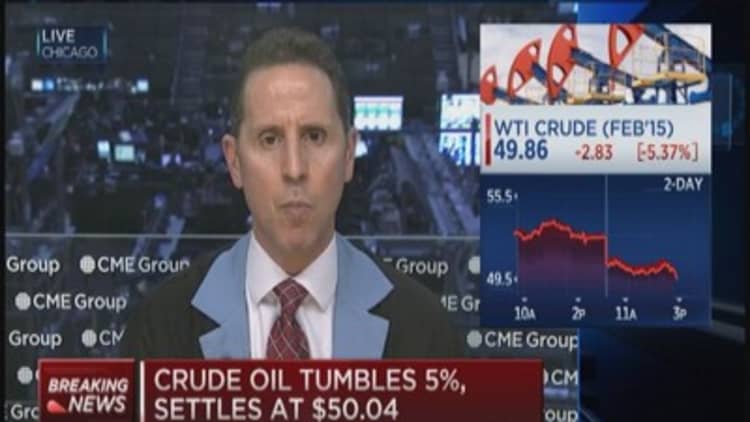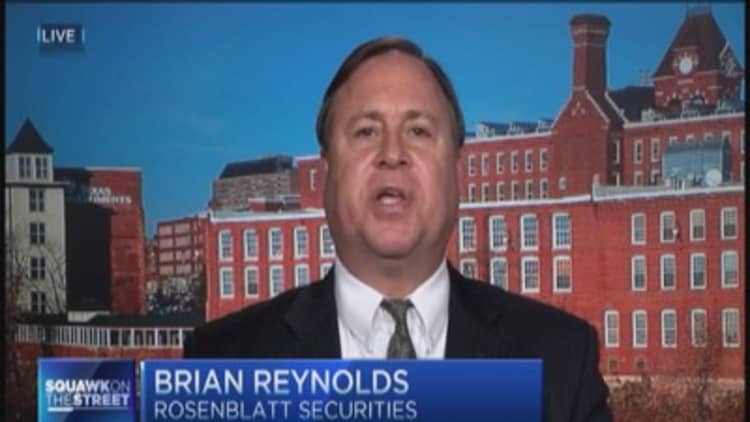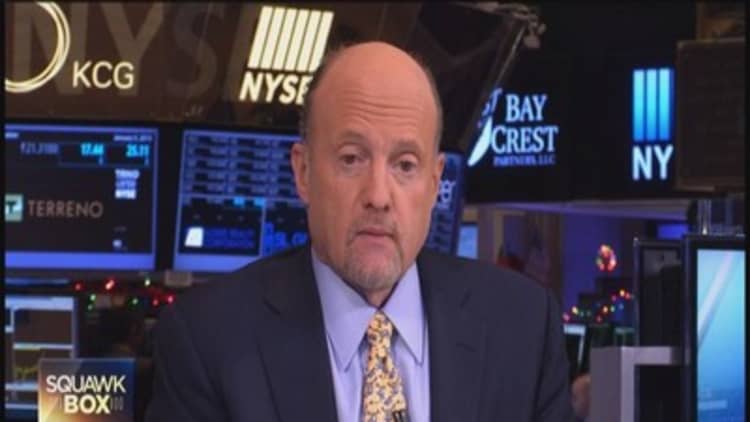




The selloff in global oil markets showed little signs of slowing in the new year, falling as much as 6 percent on Monday to their lowest since spring of 2009 as fears of a supply glut that vexed the market for the past six months deepened.
U.S crude closed down $2.65, or 5 percent, at $50.04 a barrel—its lowest settlement since April 2009. The contract fell further in extended trading.
Front-month hovered around $53 a barrel, down about $3, after dropping to $52.66, its lowest since May 2009.
Read MoreRevamped US oil hedges may test OPEC's patience
U.S crude dipped below $50 a barrel while benchmark Brent crude tumbled under $53 after data showed Russian oil output at post-Soviet era highs and Iraqi oil exports at near 35-year peaks.
U.S. driller ConocoPhillips added to the bearish sentiment, announcing it had struck first oil at a Norwegian North Sea project.
Top crude exporter Saudi Arabia has made deep cuts to its monthly oil prices for European buyers, a move that analysts said reflects the kingdom's deepening defence of market share. Saudi Arabia also trimmed prices for U.S. refiners while raising rates for Asia.
The euro's tumble to 2006 lows, and slower-than-expected growth in U.S. manufacturing, completed a perfect storm for the bearish oil markets.
"There's no doubt that we have a combination of supplies hitting their zenith at a time when demand is weakening," said Phil Flynn, analyst at Price Futures Group in Chicago.

Oil has plunged nearly 55 percent in value since June, when Brent traded above $117 a barrel and U.S. crude above $107.
The selloff, which began on concerns of oversupply in high quality U.S. shale crude, accelerated after the November meeting of the Organization of the Petroleum Exporting Countries, where Saudi Arabia ruled out production cuts as means of boosting prices. The kingdom had reasoned that reducing output will hurt its market share instead.
Read MoreBad news for diesel drivers as gas prices plummet
Some traders seem certain that U.S. crude will be trading in the $40 region later in the week if weekly oil inventory numbers for the United States on Wednesday show another supply build.
"We're headed for a four-handle," said Tariq Zahir, managing member at Tyche Capital Advisors in Laurel Hollow in New York. "Maybe not today, but I'm sure when you get the inventory numbers that come out this week, we definitely will."
Open interest for $40-$50 strike puts in U.S. crude have risen several fold since the start of December, while $20-$30 puts for June 2015 have traded, said Stephen Schork, editor of Pennsylvania-based The Schork Report.
Read MoreStrong dollar to boost travel abroad, Marriott
Russia's oil output hit a post-Soviet high last year, averaging 10.58 million barrels per day (bpd), up 0.7 percent thanks to small non-state producers, Energy Ministry data showed.
Iraq's oil exports were at their highest since 1980 in December, an oil ministry spokesman said, with record sales from the country's southern terminals.
The Russian and Iraqi data overshadowed reports of drops in Libya's oil output due to conflict. Libya's oil output has fallen to around 380,000 bpd after the closure of the OPEC producer's biggest oil port Es Sider, along with another oil port Ras Lanuf.

